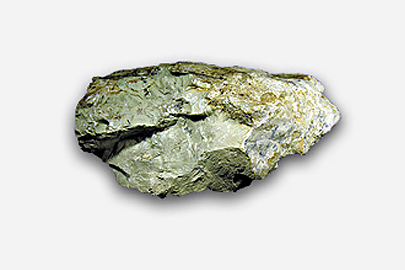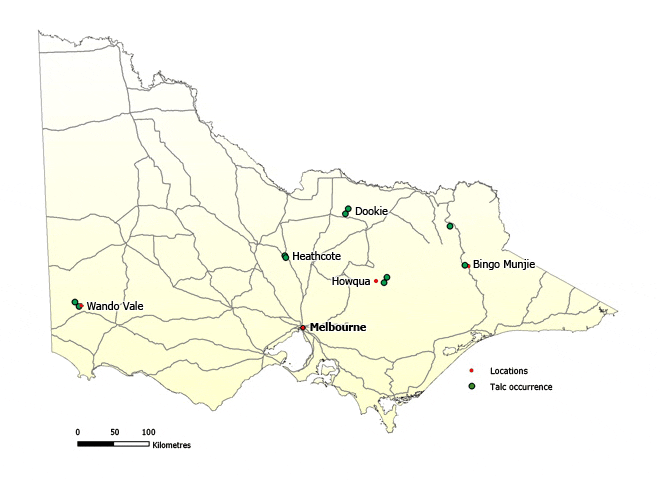Talc

Talc is soft and smooth, has a perfect basal cleavage, is easily ground to an extremely white powder, is a good lubricator, and is chemically inert. It has high absorption, a high fusion point, low shrinkage when fired, and low thermal and electrical conductivity.
Various grades are produced for numerous end uses including the manufacture of paint, plastics and rubber, paper, ceramics, and cosmetics.
There are only a few small low-grade deposits of talc [Mg3Si4O10(OH)2] and steatite in Victoria. They are secondary deposits formed by alteration of magnesium-rich minerals. Most are in the Cambrian greenstone belts.
At Heathcote, a deposit in small mafic intrusions that have been altered to talc and magnesite produced 48 tonnes of talc in 1916. In the Howqua area, 83 tonnes of talc was produced between 1946 and 1947 from fault zones in Cambrian greenstones.
Talc-bearing rocks have been noted at several locations in the Cambrian sequence in the Dookie area. There are also thin veins of impure talc in granite at Bingo Munjie North, and talc in schistose layers of serpentinised peridotite dykes and shear zones near Wando Vale, and in schist near Limestone Creek.
View the full list of industrial minerals
Further information
Industrial minerals and rocks of Victoria – Geological Survey of Victoria Report 102
Maps
To create your own maps online and in real time, plan exploration activities by viewing land status, or download GIS data to add to your own maps, visit GeoVic.

Page last updated: 12 Jan 2023